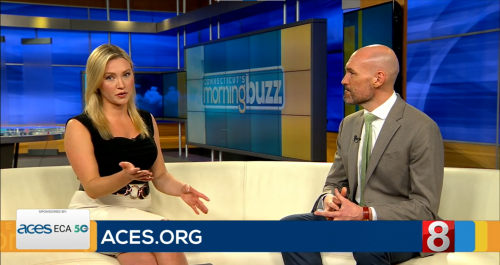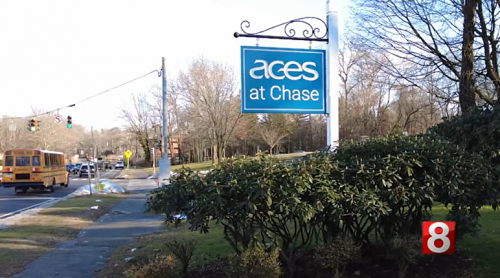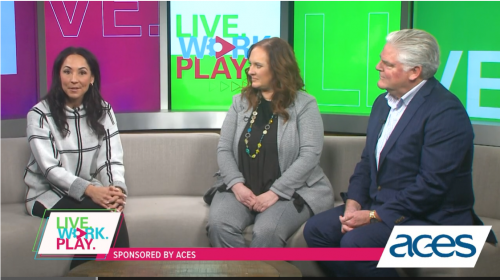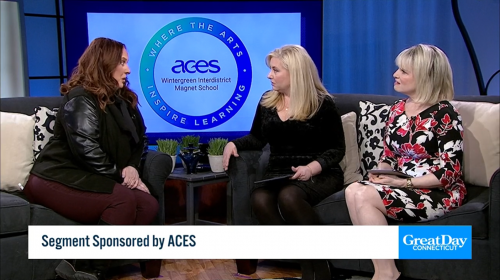-
Our Agency
- About Us
- Calendars
- Contact Us
-
Directions
- ACCESS
- ACES at Chase
- ACES International Preschool and Childcare Center
- ACES Transportation Services
- Center for Autism Spectrum and Developmental Disorders
- Central Office
- Educational Center for the Arts
- Educational Technology
- Little Theatre on Lincoln Street
- Mill Road School
- Network Services
- Staff Development / Administration
- Village School
- Whitney High School North
- Wintergreen Interdistrict Magnet School
- Human Capital Development
- Education Foundation
- News / Press
- Publications
- Request for Proposals
- Employment
- Events & Workshops
-
Schools & Programs
-
Special Education Schools
- Center for Autism Spectrum and Developmental Disorders
- Mead Elementary School
- Mill Road School
- Village School
- Whitney Academy EXPLORE & CREATE
- Whitney High School North
-
Magnet Schools
-
ACES at Chase
- About Us
- ACES at Chase: History & Origins
- Admissions
-
Student and Family Portal
- Breakfast and Lunch Menus
- Cancellations, Delays, and Early Dismissal
- Community Health Center
- Dress Guidelines
- Grading and School Policies
- Health Office
- Principal's Corner
- Quick Links
- School Newspaper: Chase Express
- Student Handbook
- Technology & Digital Citizenship
- Virtual Suggestion Box
- Document Library
- Contact Us
- Back to ACES
- Educational Center for the Arts
- Wintergreen Interdistrict Magnet School
-
ACES at Chase
- Alternative Education
- ACES Early Head Start
- ACES International
- ACES Open Choice
- ACES International Preschool and Childcare Center
- Family and Community Engagement
- Magnet School Parent Choice
- School-Based Services
-
Special Education Schools
-
Services
- ACCESS Adult Vocational Services
- ACES Insurance Collaborative
- ACES UP
- Alternate Routes to Certification
- Autism Programs
- Business Partnership Opportunities
- Clinical Services
- Educational Technology
- Facility Rental
- Fingerprinting
- International Programming
- Marketing and Communications Services
- Professional Learning
- Regional Education Councils
- Regional Special Education Transportation
- Security Services
- Speech and Language Services
- Technology
- Translation Services
- Transportation
- Find
Students will rank the following packages in order of most desired classes. Using the numbers 1, 2 and 3 | 1 being first choice; 2 as your second choice; and 3 being your third preference. Your number one choice is not guaranteed. However, we always work to accommodate our students. Participants are provided class schedules and learning resources for the package they are placed into.
Music Package
- Basics of Vocal
- Guitar
- Composition and Music Theory
- Performance Foundations
- The Business of the Music Industry
Jim Martin – Guitar
The guitar is a very accessible and popular instrument to use in the exploration of musical concepts. Guitar for Beginners offers students an opportunity to develop a greater understanding of and appreciation for music while learning how to play the guitar. Many of the concepts covered overlap with those found in other art forms and classroom discussion leads students to make these connections. The class is structured in a way that encourages students to work together and support each other in a nonjudgmental learning environment. Guitar for Beginners compliments the curriculum offered at ECA by bringing students with diverse backgrounds together to discover similarities and differences within various styles of music and other art forms. An introduction to the basic elements of music i.e., melody, harmony, and rhythm, will increase the student’s ability to listen to music and view art with greater awareness and insight.
Tatchol Camara – African Drum and Dance
Led by African dancer musician Tatchol Camara,Drum leads an engaging course in African Dance. African dance and drums that range from high energy dances to graceful and gentle dances. Professional drummer playing traditional music that enhances the intensity, energy and beauty of the dance accompanies all African dance workshops. Students are provided with African drum and dance techniques and learn the history of the dance and rhythms. This provides students an understanding of traditional life and culture in Africa.
African dance workshops are uplifting and inspiring in a way that increases activity and participation as part of our healthy lifestyle campaign through ECA and our dance department workshops. Students are taught how to play and communicate through African drum calls with different musical interpretations. Depending on their age and experience, they may be introduced to rhythms and others given the chance to enhance their rhythmic knowledge and improvisational skills. Traditional African drums and other musical instruments are all provided for each participant. African Carnival In Africa, chanting, songs and African drumming all go hand in hand and they are all traditionally meant to complement each other.
Gretchen Hary – Percussion
*Students must be able to read music in at least one clef and have knowledge of rhythmic notation including 16th and 8th note combinations in order to take this course.
The course would begin with an introduction to percussion instruments in all families. This includes but is not limited to: African drums, Latin percussion, drum set, mallet instruments, timpani, and auxiliary percussion. Students will learn about each instrument, a brief history, genre of music used in and how technique for playing. Students will be given instruction on how to properly strike each instrument whether that is with their hand or using a stick or mallet. All students will learn to hold sticks and create the four basic strokes; full, down, tap, up. Starting with the second day, students will be allowed to rotate through playing all the instruments. At this time they will be assessed and assigned an instrument and given a part to play. The students will work on learning to play together as an ensemble and learn and perform a full-length standard percussion ensemble piece. Depending on the progress of the students it is highly likely they will be able to learn multiple pieces. All students in this class will also participate in a drum circle. The purpose of the drum circle is to get them comfortable playing instruments, listening to rhythms being created, communicate, and socialize with each other.
Theatre and Movement Package
- Improvisation
- Stage Combat Acting
- Foundations
- Humor and Action
- Creative Monologue
Peter Loffredo – Theatre
The Intro to Improvisation Class will focus on introducing the students to the successful principles of Improv (“Accept and Build” “Say yes and..”) and helping each student to develop their improvisation skills - spontaneity, focus and concentration as well as confidence in their “ moment to moment” work as they explore successful approaches to improvisation and working with their scene partner(s) to achieve the objective of the scenario or game. The Class Objectives introduce games, exercises and scenarios that expand the student’s improvisational experiences, acting skills, and advance comic sensibility. To introduce conceptual activities such as “move a muscle, change a thought” that help the actor to overcome the “I can’t” quotient and the “brain freeze”. The class encourages students to continue to observe people as a way to expand their range and character choices, as well as encourage the student to actively listen to and work with peers as partners.
Michael Lerner – Stage combat
Stage combat is a specialized technique in theatre designed to create the illusion of physical combat without causing harm to the performers. It is employed in live stage plays as well as operatic and ballet productions.
This class applies the definition of acting as “behaving truthfully under imaginary circumstances” to the stage combat world. This course is an introduction and exploration of technical and aesthetic aspects of stage combat. Our main goals are to develop the ability to safely portray violence onstage within the context of a play with specificity and dramatic power, as well as to understand how stage combat fits into the practice of theater as a whole. We will be investigating the development of strength and flexibility, eye/hand coordination, understanding and applications of principles of safety in working with a partner, and learning how to advance your character journey and develop ensemble work through each individual move in a fight sequence. We will develop skills to tell the physical story with as much accuracy and commitment as you bring to the spoken word. Within our collaborative work, we are dedicated to the craft of safety, imagination, and interaction. The training develops the actor’s body and voice as strong and effective communicators of thought, emotion and intention, and opens up the imagination so that the actor can create and sustain three-dimensional worlds from the playwright’s text. These processes take place in an interactive context so that the actor is constantly learning to respond to outside stimuli – whether people, objects or atmosphere – in an open and creative way.
Visual Art Package
- Printmaking
- Screen printing
- Painting
- Sketch
- Photography
Karen Dow – Printmaking: Landscape and Portraiture
The goal of this class is to introduce students to a wide variety of printmaking and to develop their skills as visual thinkers. Using the ECA “neighborhood” as a backdrop, students will take photos of one another in and around the campus. We will use these photo sessions as an opportunity to develop the student’s “eye” for composition and begin to develop a narrative strategy.
This is a great place to begin to learn the technical skills required to complete an etching, monotype and a linocut. The printed photograph can easily be translated into a series of outlines and marks that create a sense of depth and place for the beginning printmaker.
During each class, a new method will be taught and students will have the chance to practice and gain technical proficiency in each modality. Each student will complete a series of prints using their new skills in linocut, etching and monotype over the course of the class. In the final week of class, a series of final prints will emerge that demonstrate their experience.
Paul Duda – photography
This course will consist of a study of photographic history from it beginning to the modern day. The instruction will then utilize this knowledge in a hands-on experimentation in processes beginning with Pinhole Photography landscapes, followed by 35mm black and white film portraiture, and ending with time-exposure digital imaging both with DSLR camera and cell phones. The students will each get a chance to produce photographs without the use of a traditional cameras and make their own camera to record these images. They will also get a chance to learn the film process and learn darkroom techniques. This course requires no prior knowledge in the medium.










